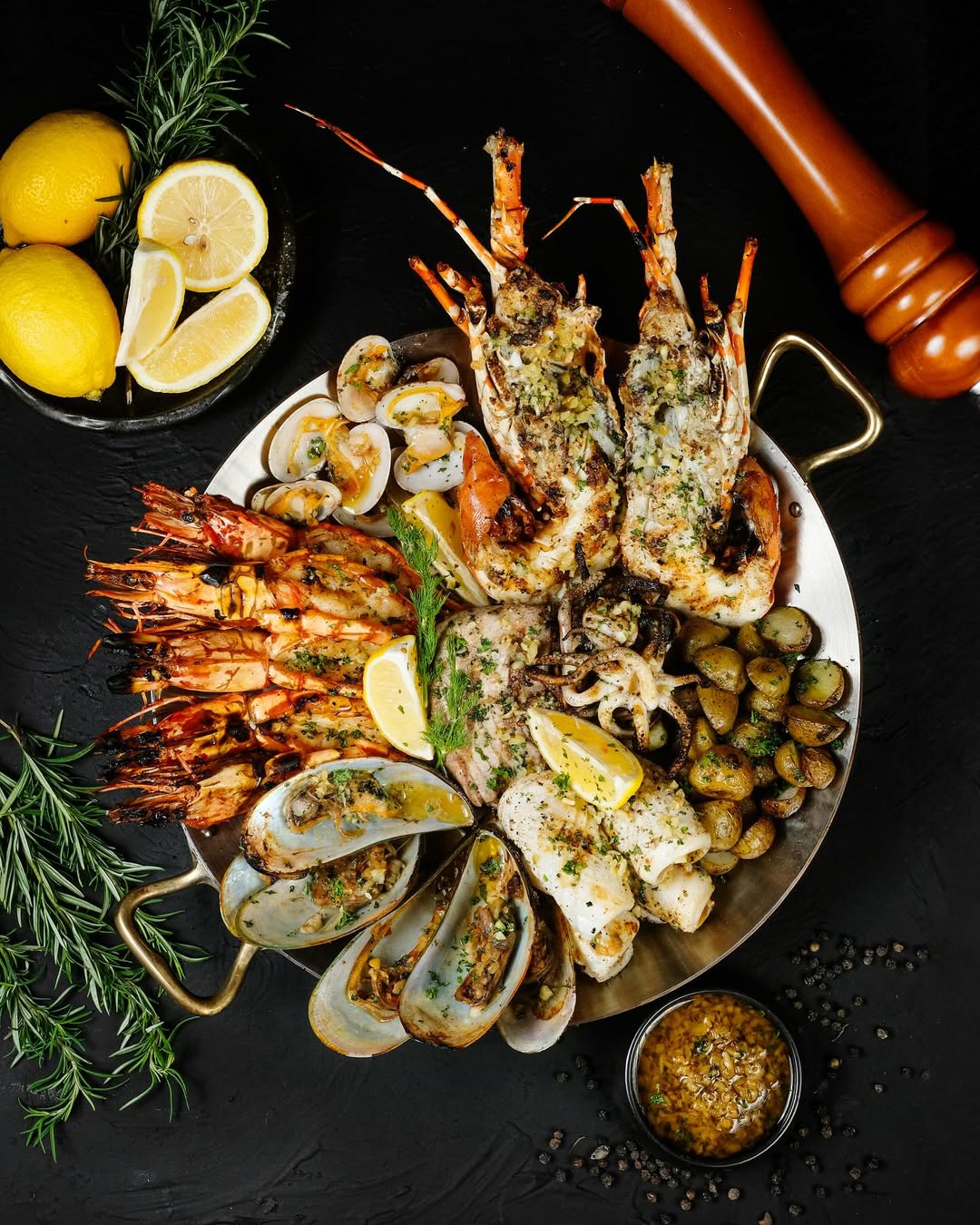Grilling seafood scares a lot of people.
It’s delicate, expensive, and if you blink too long, it goes from perfect to fish jerky.
I’ve watched grown men nail a brisket for 12 hours, then panic over a fillet of salmon. Truth is, seafood doesn’t need fear – it needs finesse.
So grab your tongs and some lemon slices. This pitmaster’s guide will show you how to grill seafood – fish, shrimp, and shellfish – to smoky, juicy perfection every time.
Fire Meets the Sea: Why Seafood Deserves the Grill
Let’s be real: people think seafood belongs in a pan, not over open flame. But the grill? That’s where it sings.
Fire brings out sweetness, smoke adds depth, and a light char turns mild fish into something primal.
The trick is understanding that seafood isn’t steak. It’s faster, lighter, and less forgiving. But that’s also the beauty of it – blink, and dinner’s done.
Once you get the basics down, grilling seafood becomes one of the easiest, most rewarding moves you can make. Plus, it looks fancy.
Why People Fear Grilling Seafood (and Why They’re Wrong)
Most folks have had at least one seafood disaster.
Fish welded to the grate. Shrimp that taste like erasers. A $30 piece of halibut that disintegrated like confetti.
Here’s the secret: it’s not your fault – it’s physics.
Seafood has less fat and looser proteins than beef or chicken. That means it cooks lightning-fast and dries out just as fast.
But once you respect that, grilling seafood becomes less scary and more like a dance. Control the heat, prep it right, and don’t manhandle it.
Or, as I like to say: “The flame isn’t your enemy. It’s your paintbrush.”
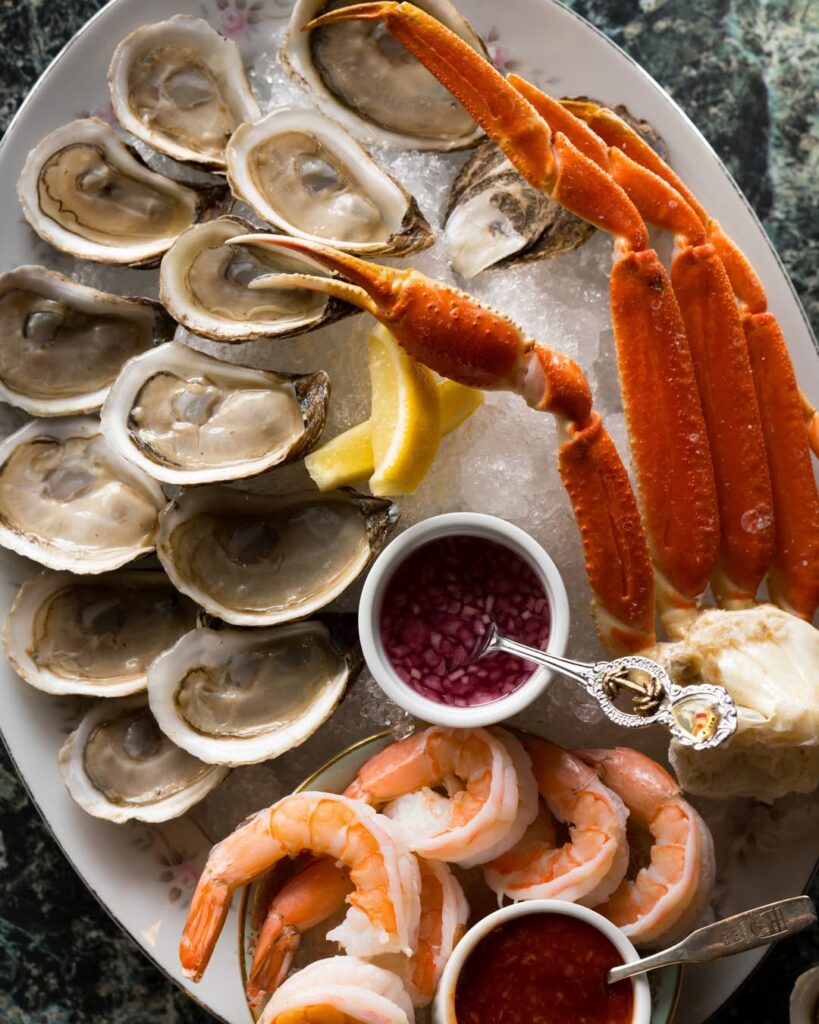
Choosing the Right Seafood for the Grill
Before you even light the coals, know this – not all seafood wants to be grilled. Some fish are born for it; others belong in a poaching pan.
Here’s your grill-friendly lineup:
Fish
- Best picks: salmon, tuna, swordfish, snapper, halibut, trout.
- These have firm flesh that won’t fall apart when flipped.
- Avoid delicate fish like sole or flounder unless you’re using a grill basket or foil.
Shrimp
- Go for large or jumbo shrimp. Tiny ones dry out faster than you can say “cocktail sauce.”
- You can leave the shells on (adds flavor) or peel them for convenience.
Shellfish
- Scallops, lobster tails, clams, and oysters are all solid choices.
- They’re naturally built for high heat and short cook times.
Pro buying tips:
- Fresh seafood should smell like the ocean – clean, not fishy.
- Flesh should be firm and spring back when pressed.
- If you’re buying frozen, thaw it slowly in the fridge, not under hot water.
And for bonus karma? Choose sustainable sources. The ocean will thank you.
Prepping Seafood for the Grill
Grilling starts before you hit the grates. The prep step is what separates “eh” from “epic.”
1. Pat it dry
Moisture = steam, not sear. If your fish is wet, it’ll stick. Dry it with paper towels before seasoning.
2. Light oil coat
Brush both the grill grates and the seafood with a high-smoke oil like canola or avocado. That’s your anti-stick insurance policy.
3. Salt and season smartly
A light sprinkle of salt just before grilling helps flavor and keeps moisture balanced. Want extra punch? Add pepper, citrus zest, or a touch of smoked paprika.
4. Marinades: quick and light
Seafood absorbs flavor fast – 15 to 30 minutes tops. Anything acidic (like lemon or vinegar) will start to “cook” the fish if you leave it too long.
5. Tools help
For small shrimp or delicate fillets, use skewers or a grill basket. Think of them as training wheels that still look cool.
Pro tip: Oil the grill and the seafood. That’s how you keep your salmon skin on the fish, not the grate.
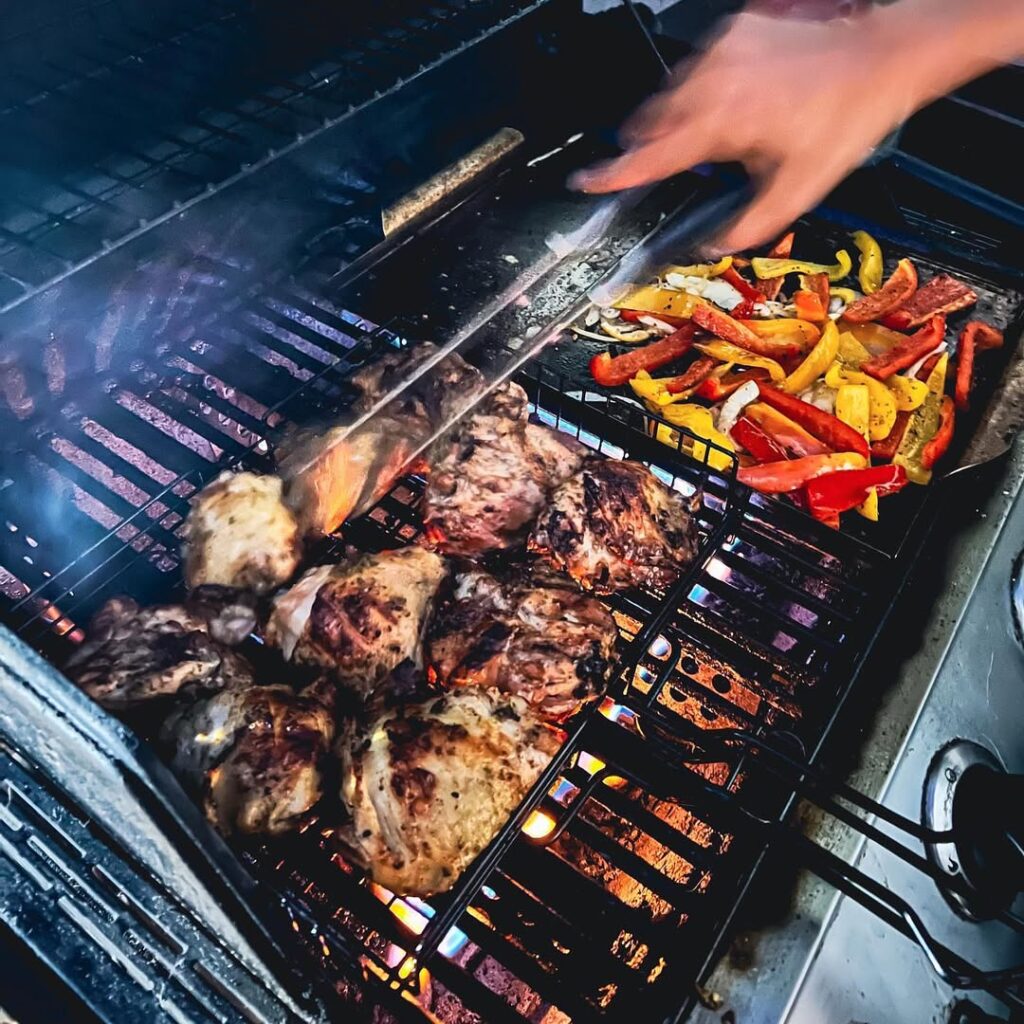
Heat Management: The True Art of Grilling Seafood
Grilling seafood is all about temperature control. Too hot and you’ll burn the outside before the inside’s ready. Too cool and it steams.
The sweet spot:
Medium-high heat, about 375–425°F.
Direct vs. Indirect heat:
- Direct heat = quick sear for shrimp, scallops, fillets.
- Indirect heat = thicker cuts or whole fish that need a gentler touch.
If you’re using charcoal, bank the coals to one side. If gas, just turn one burner lower.
That’s your “cool zone” – your safety net when things cook too fast.
Gas vs. Charcoal
- Gas: control and consistency.
- Charcoal: that unbeatable smoky edge.
Whichever you use, the rule stands: preheat well, and clean your grates before cooking.
How to Grill Each Type of Seafood Perfectly
Fish
- Oil the grates and fish.
- Place skin-side down first – that’s the nonstick secret.
- Don’t move it until it naturally releases (about 3–4 minutes).
- Flip once, gently, using a wide spatula.
Rule of thumb:
8–10 minutes of total grill time per inch of thickness.
Want extra smoke and zero stick? Try cedar planks. They add subtle flavor and act like a buffer between flame and fish.
Shrimp
Shrimp are fast – blink and they’re done.
- Thread them on skewers or toss in a grill basket.
- Cook over medium-high heat for 2–3 minutes per side.
- Done when they’re pink, opaque, and gently curled.
Too curled? Too late.
If they look like tight little circles, you’ve overcooked them. Aim for a “C” shape, not an “O.”
Shellfish
Scallops:
Dry them thoroughly (moist scallops don’t sear). Oil lightly and cook 2–3 minutes per side until golden and opaque.
Lobster tails:
Split lengthwise, brush with butter, and grill meat-side down for 5–6 minutes, then flip. When the meat turns opaque and the shell glows red, it’s showtime.
Clams and oysters:
Place them directly on the grill. They’re ready when they pop open on their own. If they stay shut, toss them – they didn’t make the cut.
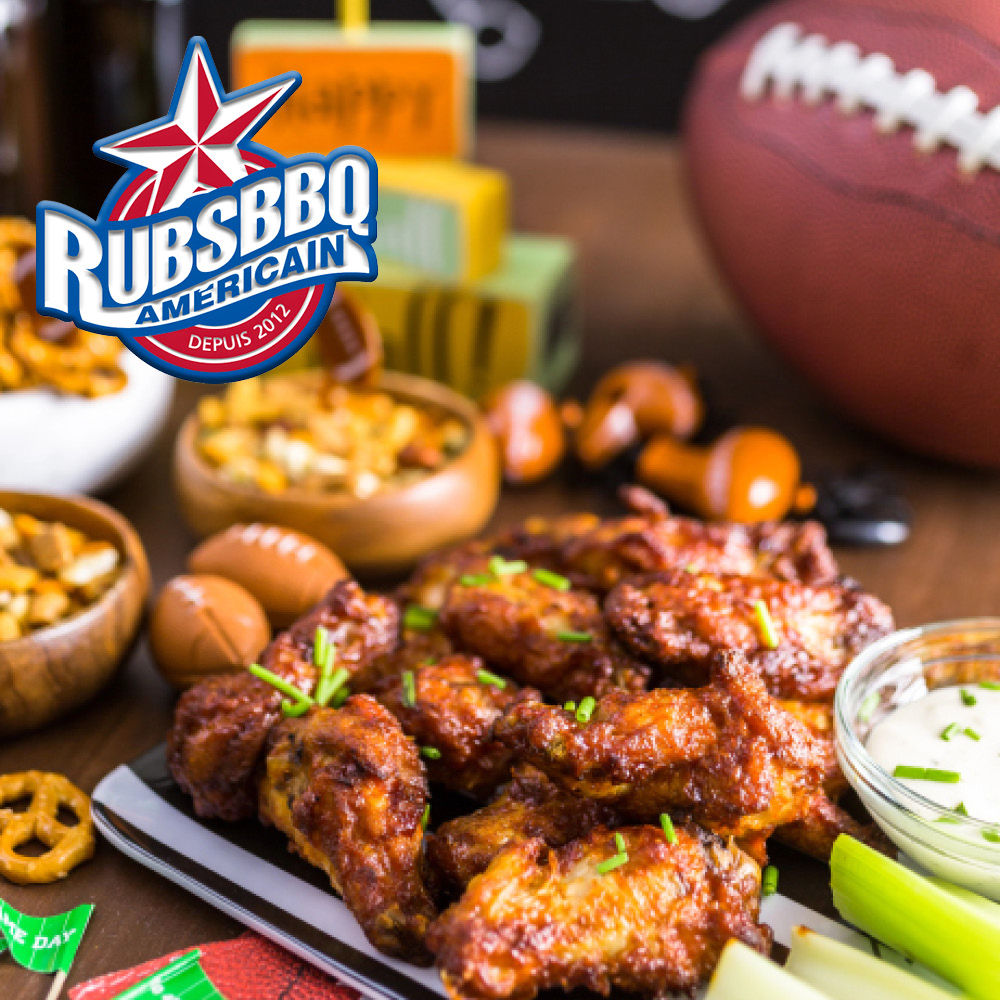
Flavors, Rubs, and Sauces That Shine on Seafood
Seafood doesn’t need much – it’s naturally flavorful.
But the right accents can turn a good dish into a great one.
Rubs & Marinades
- Citrus zest + garlic + herbs = fresh and bright.
- Smoked paprika + chili + lime = bold and smoky.
- Soy + ginger + sesame = sweet-salty balance.
Sauces
- Lemon butter for classics.
- Chimichurri for punch.
- Mango salsa for tropical flair.
- Miso glaze for umami depth.
Wood Pairings
- Alder: mild, perfect for salmon.
- Applewood: sweet and balanced.
- Oak or hickory: bold – use sparingly.
Remember, seafood likes subtlety. Don’t drown it.
Avoiding Common Seafood Grilling Mistakes
If you’ve ever turned seafood into rubber, welcome to the club.
Here’s how to graduate from rookie to pitmaster:
- Overcooking: Seafood keeps cooking even after you pull it off the grill. Stop early.
- Too much flipping: You’re not making pancakes. One flip, max.
- Grilling straight from the fridge: Cold seafood seizes. Let it rest at room temp for 1 – 20 minutes.
- Skipping the oil: A dry grate is a sticky disaster.
- Crowding the grill: Give each piece space to sear properly.
And please, no stabbing with a fork to check doneness. That’s how juices escape. Use a thermometer instead:
- Fish: 145°F
- Shrimp and shellfish: opaque and firm
Serving and Presentation Tips
Once the seafood’s grilled, give it a brief rest – just a few minutes. That helps the juices redistribute.
Then, hit it with acid.
A squeeze of lemon, a splash of vinaigrette, or a drizzle of citrus oil can wake up the flavor like caffeine on Monday morning.
Keep sides light: grilled vegetables, couscous, or rice. Let the seafood be the star.
And remember, beautiful plating is simple plating. Clean grill marks and fresh herbs beat over-styled chaos any day.
Quick Reference Grill Chart
| Seafood Type | Grill Time | Internal Temp |
| Salmon (fillet) | 8–10 min/inch | 145°F |
| Shrimp | 2–3 min/side | Opaque pink |
| Scallops | 2–3 min/side | Opaque center |
| Lobster tail | 5–6 min/side | 140°F |
| Clams/Oysters | Until open | N/A |
If it smells like the sea and has grill marks, you did it right.
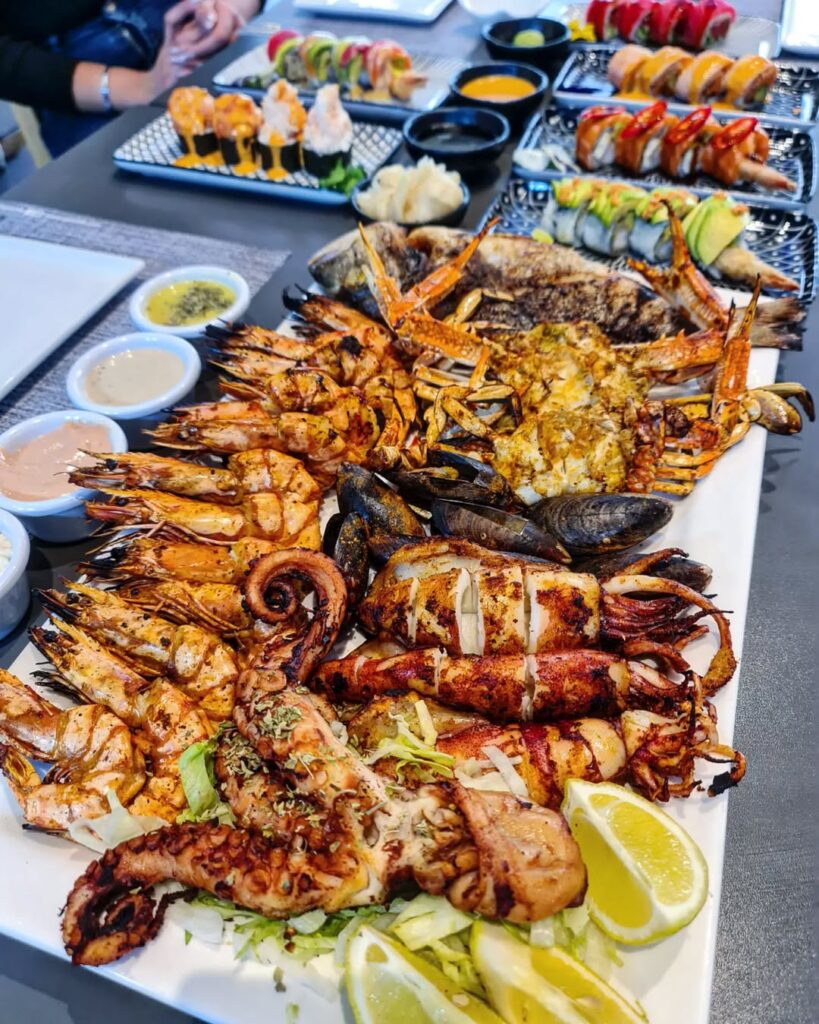
Grilled Seafood is an Absolute Stunner if You Know How to Grill It
How to grill seafood isn’t about perfection – it’s about patience.
It’s about knowing your fire, reading your food, and trusting your senses.
Seafood doesn’t need long hours or fancy tricks. Just respect the timing, manage the heat, and let the ingredients do the talking.
So the next time someone tells you seafood’s “too hard” to grill, smile and hand them a perfectly seared scallop.
Then say what I always do:
“The ocean’s not scary. You just needed the right fire.”
Featured image credit: @rossovivobali

